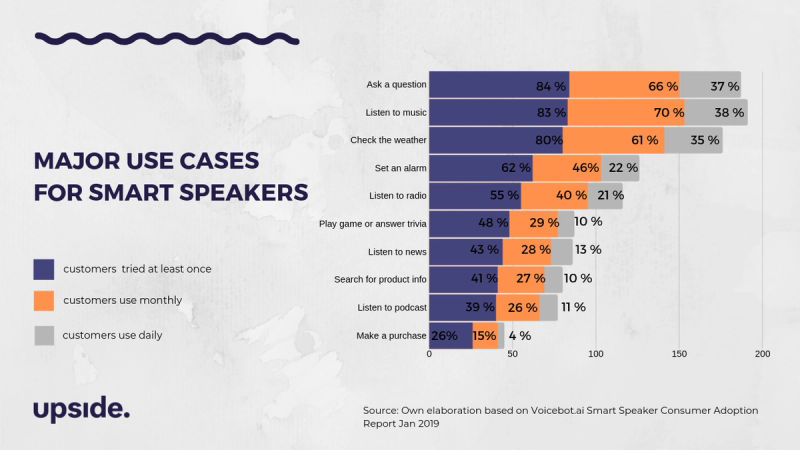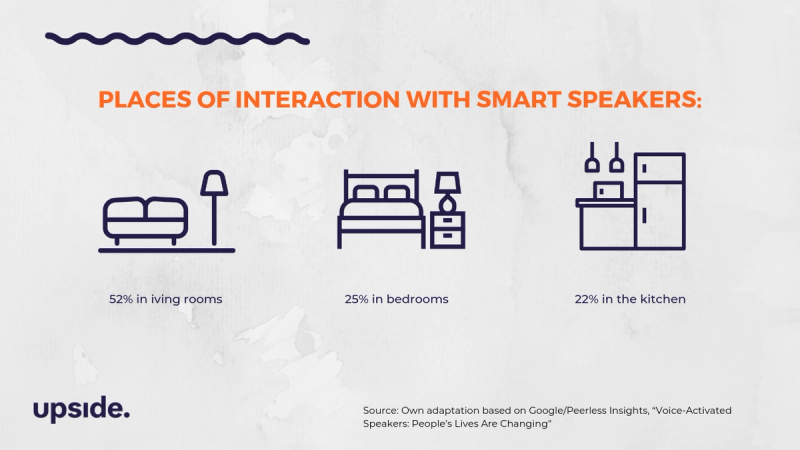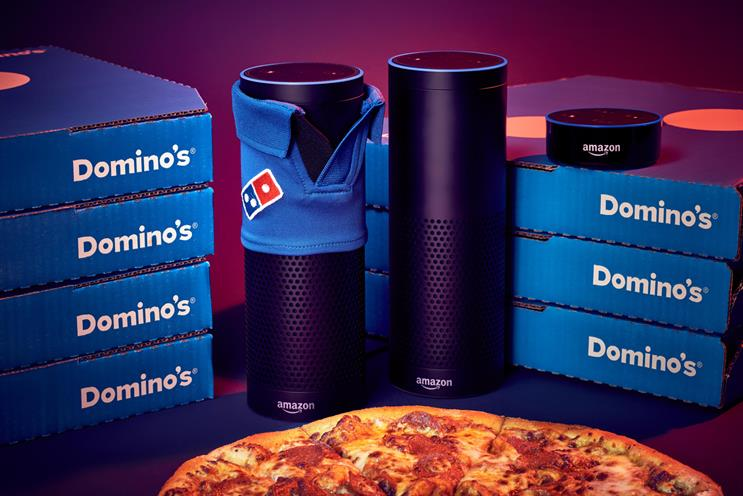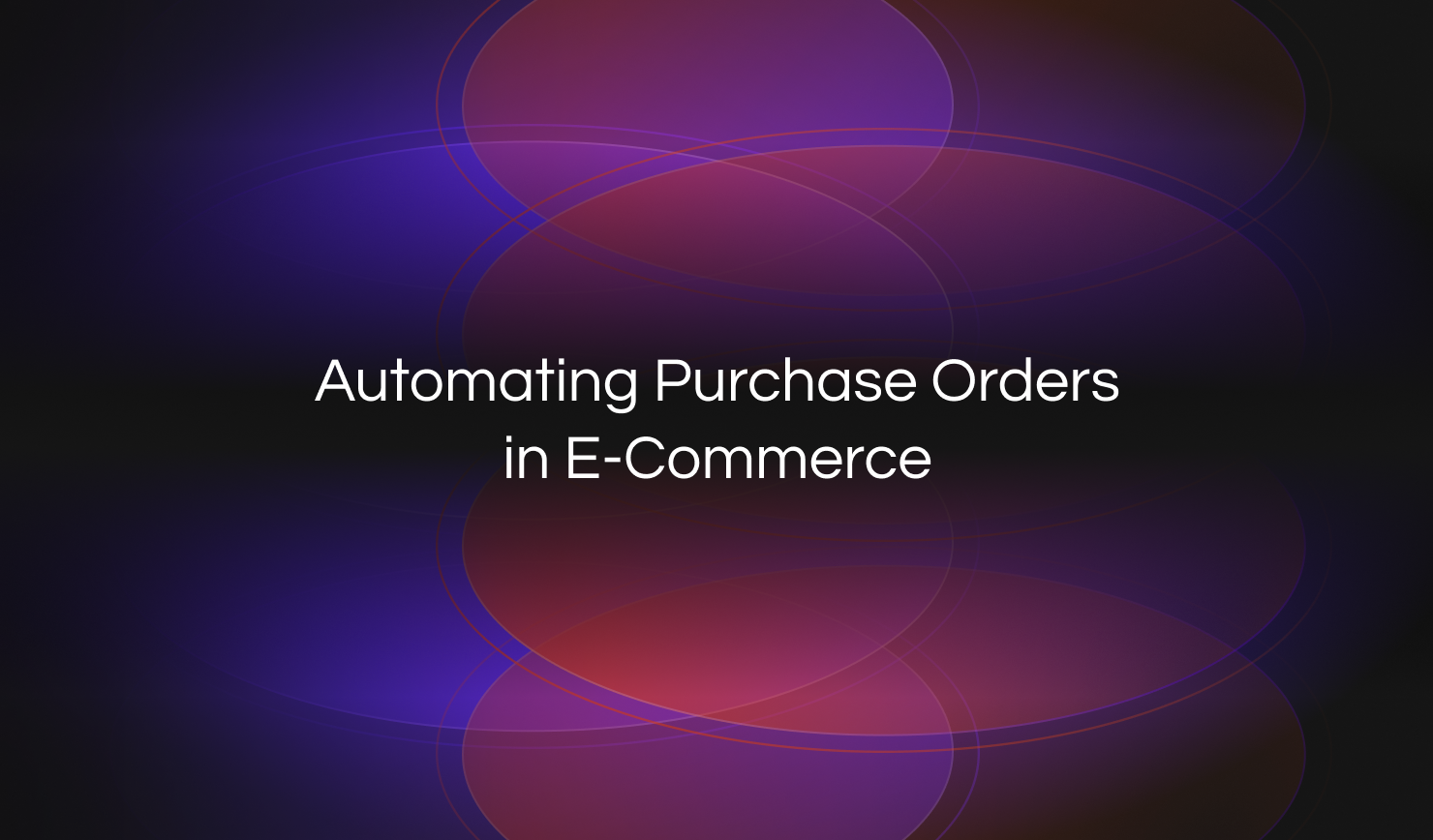5 Ways How Brands Can Create Voice Customer Experiences
Night Mode

The Next Big Thing In Shaping Customer Experience Is Voice Recognition and Smart AI
There is no doubt that wide adaptation of voice-powered devices can significantly change brand strategies. The constraints made by limitation of graphical interfaces slowly disappear while AI gets smarter and conversational interfaces more sophisticated.
One of the first frontiers of the evolution are voice assistants available on smartphones and smart speakers.

Consumer Adoption of Voice Rapdily Grows
A study by Pindrop found out that more than 75% of businesses worldwide are planning to include voice assistants in interactions with customers to boost their satisfaction.
Voice applications can not only provide instant responses (e.g. by automating customer support) but also act like a personal advisor when it comes to handling easy to perform tasks - like reordering.
Currently, a significant growth in adoption of voice-based solutions being implemented across different fields in observed. That inspires companies to look for new ways to engage their customers through voice. After all, being present in customers' living room has a huge potential to provide valuable experiences.
Why Brands Need Voice Strategy Now?
Consumer adoption of voice technologies has been faster than any product since smartphone. It's expected to reach 91 million people in the United States (almost 30% of the population) using voice-powered devices at least once a month by 2020, as reported by eMarketer.
Remember the times where mobile just enetered the stage? Same is happening with voice right now. However, the growth is accelerated.
How To Get Started With Providing Value Through Voice?
Brands across the globe understand that more and more people are turning to voice assistants. Here are 5 simple steps that everyone should have a look at.
1: Placeonas
The first thing brands need to do, is to truly understand their customer needs without constraints of technology - if they can explain how, where, and why their customers would prefer to use voice, their can notice natural connections between product and needs.
Take a look at sales representatives driving across the country. Majority of their day is spent in cars commuting from one location to another. While having their sight and hands occupied with driving, speech and listening are two major senses that can be used - what if CRMs creators provide them with access to latest reports and notes from previous meeting with one sentence over comprehensive graphical interfaces that bring no value in that situation?
When it comes to voice, it is more efficient to focus on placeonas (where the user is at a given moment) than UX personas (who the users are). Bill Buxton defined the concept of a “place-ona” as showing how a location can place limits on the type of interactions that make sense.

2: Voice Search
According to research of voice trends from 2018/2019 voice search is becoming more and more popular. What's more, it targets all user groups - users who are too busy to type, eldery and disabled people for whom typing is challenging and also children who have troubles spelling (and still want to know why the sky is blue).

Moreover, voice search opens a new door is online marketing - PASO, a Personal Assistant Search Optimization. And what's even more interesting is the openess on the market - Voicebot.ai found out that 52% of smart speaker users would like to receive information on sales, while 39% would like to receive business information through their smart speakers.
3: Voice Commerce
Voice has a huge potential to disrupt the way cosumers shop today. Revenue from conversational commerce is expected to hit £3.5bn by 2022, according to OC&C Strategy. The way to go is a long one, but we have already seen some great examples on how to use voice assistants by brands to leverage their online sales.
One of the powerful cases is a demo of voice commerce made for Tchibo that allows customers to seamlessly order coffee with one simple sentence.
4: Multimodal Experience
But it's not all just about voice. Multimodal experiences leverage the potential of voice powered devices giving the possiility to display needed data. Joan Palmiter Bajorek, founder of Women in Voice, describes multimodal experiences in UX Matters article as incorporation of images, icons, videos, sounds, and interactive content. If we take a look at the market, there are more and more smartspeakers available that include even a tiny screen.
That means that brands who were very reluctant to voice at first, could have a safer entry point - e.g. with ability to visualize various types of products and data.
5: Personalization
It has been a few years since the appearance of smart speakers on the market. One of the most popular reasons to invest in the presence on voice platforms is the ability to create personalized experiences. One of the most powerful business cases comes from Domino's - world leader in pizza delivery.

In 2013 Domino's introduced Easy Orders - a feature that enables saving favorite pizzas and ordering them with just one click. It turned out to be a huge success resulting in lots of customers switching from traditional ways of ordering pizza to a simple app. Later on, the company experimented voice launching thier own Alexa Skill to order pizza via voice. And that was a hit! It provides personalized experience and fits perfectly into daily routines.
How Will Advertising On Voice Sounds Like?
There is also one more aspect worth mentioning - voice advertasing. One of the latest news comes from the music streaming platform - Pandora.
Pandora’s new voice ads allow listeners to interact with them — either to get more information about the product being advertised, or to skip the ad if it is not interesting for a given person.
Entering The Era Of Conversational Experience
There is a lot going on when it comes to brands experimenting with their presence on voice platforms. However, the ones that stand out have a few things in common - perfect usecase where voice fits naturally and flawless design that provides customers with a natural interaction.
In the process of making voice strategy we really encourage brands not to think about voice as a standalone campaign, but rather a part of long-term strategy.
In the meantime, if you have any thoughts to share feel free to contact us. We're always ready to talk about how voice can add up to business strategies!
Explore More Blog Posts

The AI Design Gap: Moving Beyond One-Way Generation
There are plenty of tools capable of generating code from designs or directly from prompts. In theory, this looks like a dream scenario. It drastically shortens the journey from design to frontend development. The handoff is quicker, the design is easier to implement, and everyone involved is happier. Right?

Migrating an ERP-Driven Storefront to Solidus Using a Message-Broker Architecture
Modern e-commerce platforms increasingly rely on modular, API-driven components. ERPs… do not. They are deterministic, slow-moving systems built around the idea that consistency matters more than speed.

Automating Purchase Orders in E-Commerce: How Agentic AI Handles Unstructured Input
In an era of connected e-commerce, it’s easy to assume that every order flows cleanly through APIs or online checkouts. The reality, however, may be very different, especially in industries where B2B and wholesale operations still rely on unstructured, offline, or legacy input formats.